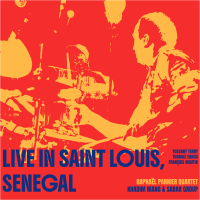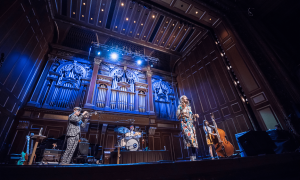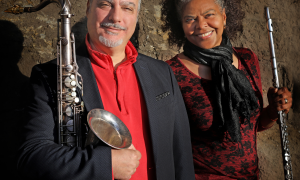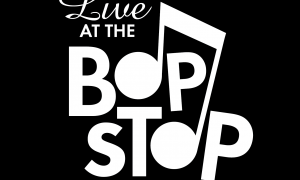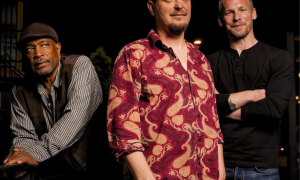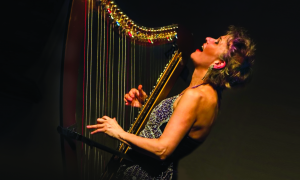The following post appeared on Rifftides nine years ago this spring. What thoughts does it stimulate in readers now? Have there been significant changes in jazz since 2008?
Originally posted on March 4, 2008
Rifftides reader George Finch sent this message in reaction to a ten-year-old article in The Atlantic. There has been so little essential change in jazz since 1997 that The Atlantic piece might have been written last week. It consists mainly of a conversation among authors Tom Piazza, the late Eric Nissensen and the magazine’s Ryan Nally. To read the article, go here. Mr. Finch comments:
Just read Eric Nissensen’s book while I was in Boston, and happened to come across this article. Haven’t read Tom Piazza’s book, but Nissensen makes a lot of good points, although he goes overboard on Wynton and his “neo-conservatism”. I didn’t know that Marsalis was powerful enough to shape jazz. Also, Nissensen’s existentialist definition of jazz as almost pure process is a tad extreme, although a good searchlight. It is a creative process that defines itself as people create the music, but the process does not take place in a void. There seems to be a tradition that they work with, and the good ones will not be content just rehashing it. There will always be ” there must be something else”.
Well, enough. I am not a musician, just trying to learn and think things out. Where do you stand visa vis their chit chat, and who are some of the musicians forging new directions in jazz?
Marsalis did not shape jazz. He shaped himself, shaped Jazz At Lincoln Center and served as a role model to young musicians. Nissensen confused that with shaping jazz. I am not aware of musicians who are forging new directions in jazz, despite blather and ceaseless promotional claims, more of them from managers, agents, publicists and record companies than from musicians.
Unless I’ve missed something (always a possibility), the last time new directions were forged was the late fifties, early sixties – Ornette Coleman, John Coltrane, Bill Evans, Miles Davis. Every “departure” since then has been imitation or elaboration. Fusing jazz and Latin, jazz and klezmer, jazz and blue grass, hip-hop, classical, folk, ragas, gamelan, etc., etc., etc., does not consitute newness. It constitutes fusion. Some of it is wonderful, but none of it amounts to innovations like those of Armstrong, Young, Parker, Gillespie, Evans, Coltrane, even Coleman. Playing without guidelines, which in the final analysis is impossible and which Ornette neither did nor claimed to do, is not a new direction.
There is a powerful and apparently unquenchable notion that to be worthwhile, music must break new ground. It is difficult enough, and should be satisfying enough, to play and write music well. To say that, is not to downgrade or discourage searching and experimentation. Even searches that lead nowhere and experiments that fail can be valuable and interesting. If a new direction is being forged, we will recognize it when the forging produces something so artistically powerful that it doesn’t need public relations to announce it or critics to analyze it.
Originally posted on March 4, 2008
Rifftides reader George Finch sent this message in reaction to a ten-year-old article in The Atlantic. There has been so little essential change in jazz since 1997 that The Atlantic piece might have been written last week. It consists mainly of a conversation among authors Tom Piazza, the late Eric Nissensen and the magazine’s Ryan Nally. To read the article, go here. Mr. Finch comments:
Just read Eric Nissensen’s book while I was in Boston, and happened to come across this article. Haven’t read Tom Piazza’s book, but Nissensen makes a lot of good points, although he goes overboard on Wynton and his “neo-conservatism”. I didn’t know that Marsalis was powerful enough to shape jazz. Also, Nissensen’s existentialist definition of jazz as almost pure process is a tad extreme, although a good searchlight. It is a creative process that defines itself as people create the music, but the process does not take place in a void. There seems to be a tradition that they work with, and the good ones will not be content just rehashing it. There will always be ” there must be something else”.
Well, enough. I am not a musician, just trying to learn and think things out. Where do you stand visa vis their chit chat, and who are some of the musicians forging new directions in jazz?
Marsalis did not shape jazz. He shaped himself, shaped Jazz At Lincoln Center and served as a role model to young musicians. Nissensen confused that with shaping jazz. I am not aware of musicians who are forging new directions in jazz, despite blather and ceaseless promotional claims, more of them from managers, agents, publicists and record companies than from musicians.
Unless I’ve missed something (always a possibility), the last time new directions were forged was the late fifties, early sixties – Ornette Coleman, John Coltrane, Bill Evans, Miles Davis. Every “departure” since then has been imitation or elaboration. Fusing jazz and Latin, jazz and klezmer, jazz and blue grass, hip-hop, classical, folk, ragas, gamelan, etc., etc., etc., does not consitute newness. It constitutes fusion. Some of it is wonderful, but none of it amounts to innovations like those of Armstrong, Young, Parker, Gillespie, Evans, Coltrane, even Coleman. Playing without guidelines, which in the final analysis is impossible and which Ornette neither did nor claimed to do, is not a new direction.
There is a powerful and apparently unquenchable notion that to be worthwhile, music must break new ground. It is difficult enough, and should be satisfying enough, to play and write music well. To say that, is not to downgrade or discourage searching and experimentation. Even searches that lead nowhere and experiments that fail can be valuable and interesting. If a new direction is being forged, we will recognize it when the forging produces something so artistically powerful that it doesn’t need public relations to announce it or critics to analyze it.






